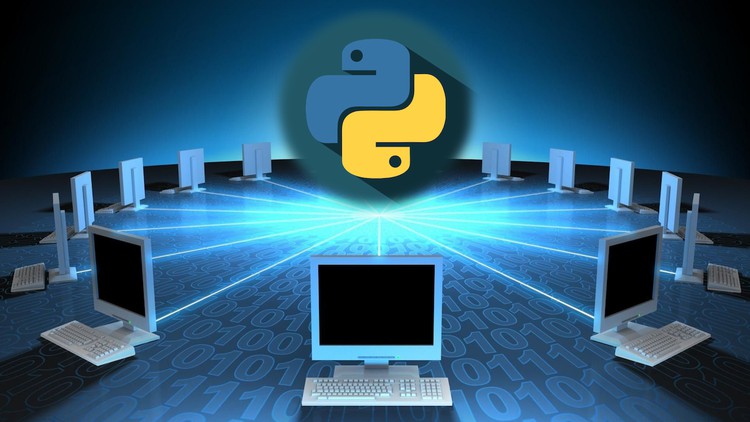
Learn Network Programming with the Full Featured Python Libraries
What you will learn
Python basics and applying them to real world projects.
Extract information to any web location with Python
Network and HTTP Programming
TCP/UDP/IP Networks and Interfaces
IPv4 and IPv6 Internet Protocols
Using Sockets to connect servers and clients
Web Scraping with BeautifulSoup and Scrapy
Extracting Emails and Email Protocols with POP3 and IMAP
Interacting with web APIs
Description
Welcome the the Python Networking Course. Here you’ll learn how to use Python for network programming, extract data in different formats over the web and request and retrieve web resources. You’ll adopt variety of protocols, and you’ll modify systems over the web with DNS and IP networking. We will start from the very basics with python 3.9 installations and continue to the advanced networking topics.
We will cover socket programming and develop practical client-to-server applications with API and FTP. The applications generated code will be endorsed through current web frameworks.
The Python Networking course is a great reference for computer science students, system administrators and experienced Python developers who are looking to expand their knowledge with Python Network Programming libraries. Even though the course is perfect for advanced programmers, prior experience with Python is not recommended. There are two section covering all Python basics.
Python network programming provides a broad exploration of the basic principles of the network. Python supports network programming and provides plenty of key libraries. You will also learn how to use powerful GUI applications to monitor your traffic such as Wireshark. It as a diagnostic tool for protocol research and network programming. We will also see how we can interact with Python’s Wireshark with the pyshark module.
Socket Programming introduces the basics of sockets and the principles of UDP and TCP through examples involving the socket module with the IPv4 and IPv6 protocols. We will also cover asynchronous and non-blocking programming and HTTPS and TLS for the secure transport of data.
HTTP network programming covers the HTTP protocol and core Python modules such as the standard urllib library and the REST API connection request package. It also covers HTTP authentication mechanisms and how we can manage them through the request module. The Application Programming Interface in Action covers how to use Python to extract data from the major data formats on the web: HTML, XML, and JSON. A
Reaching email data by exploring Python modules that facilitate communication with email servers using the SMTP, POP3, and IMAP protocols. Practical code examples in Python 3.7 will illustrate most of the concepts.
Web Scraping with BeautifulSoup and Scrapy covers how to extract content from a web page by automating the information retrieval process using scraping techniques to automatically retrieve data from the web. We will cover some of the more powerful tools that we can find in Python 3.9, with a focus on BeautifulSoup and Scrapy.
Content
